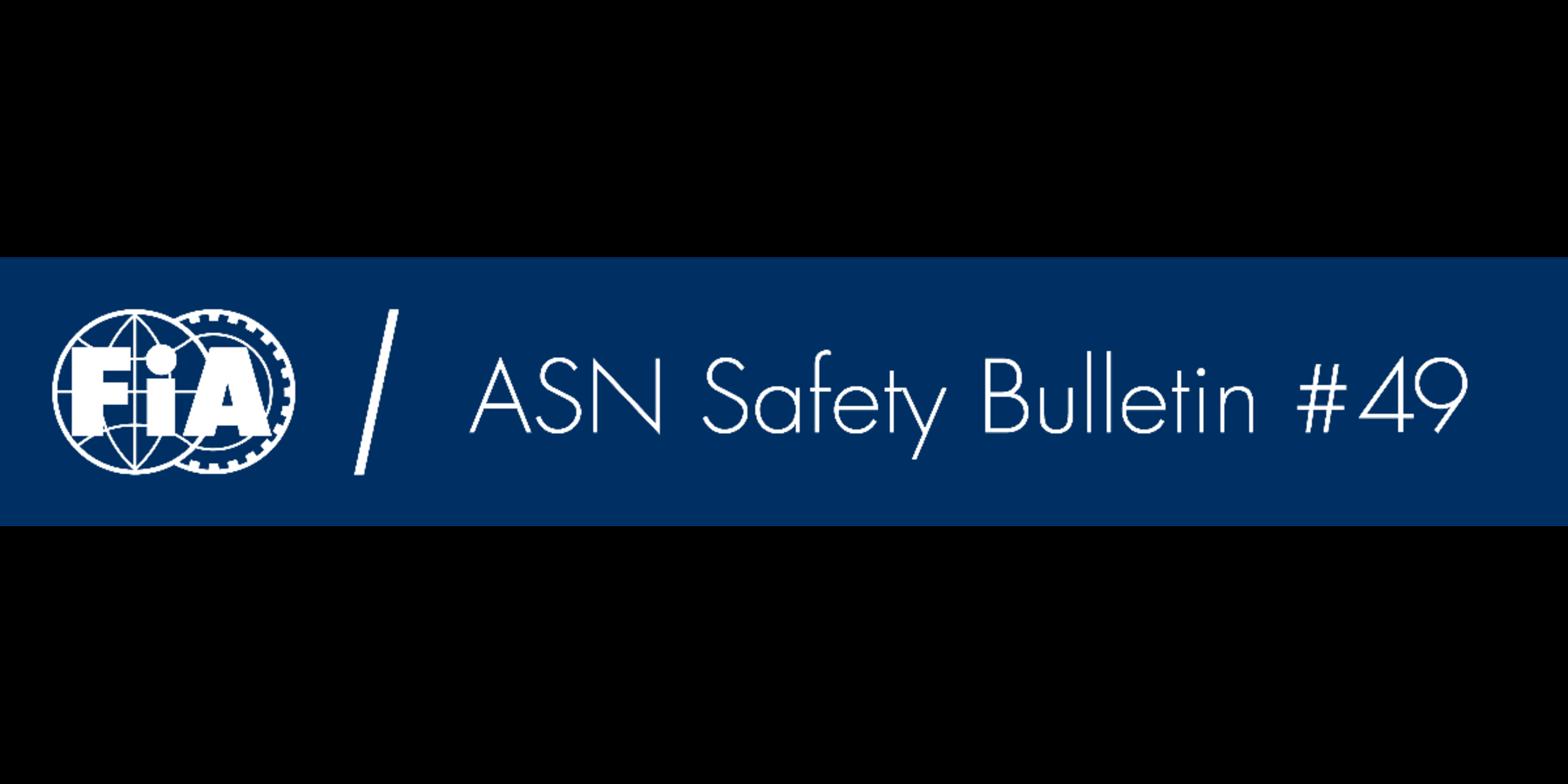ASN Safety Bulletin #49 Race Car Rain Light
29 Apr 2025 > Safety Bulletin
Dear colleagues,
In this ASN Safety Bulletin, we would like to highlight the importance of Race Car Rain Lights. Rain lights are electronic devices installed on racing vehicles and their primary purpose is to improve visibility in wet or low-visibility conditions and therefore are very relevant for competitor safety.
Additionally, in some categories, rain lights can signal various vehicle states through periodic flashing. For instance, when kinetic energy is being converted into electrical charge for the battery - potentially affecting the car decelerations - the rain light may flash to indicate this process.
The FIA Standard 8874-2019 “Race Car Rain Lights” provides design and performance requirements for rain light devices. The standard defines two different approval Grades (Grade 1 and Grade 2). Grade 1 rain lights will be for special applications, such as for FIA F1, FIA LMP1, etc. and Grade 2 rain lights will be for all the other championships that require the fitment of rain lights. The grade of the rain light is defined in the technical regulations of each championship.
The standard defines the dimension requirements for rain lights, minimum intensity of the light emitted within a certain range of vertical and horizontal angles and colour emitted.
Homologated race car rain lights are listed in FIA Technical List No. 76 (you can access the latest update of the Technical List HERE or by scanning the below QR code).

To ensure its efficiency, it is important to confirm that the rain lights are installed and maintained in accordance with the manufacturer’s instructions. Within this safety bulletin, we want to highlight some key elements that competitors must take into account:
1/ INSTALLATION
Rain lights are delicate devices that should be treated with care and precision. Extra care should be taken while fitting the rain lights to the car. Appropriate force must be applied to fasteners and fixings to avoid any damage or wear to the device. The user manual contains recommendations concerning appropriate force and torque needed to fix the rain light. It also contains information on proper installation of the rain light on the vehicle.
It is beneficial to consider the rain light placement during the design of other parts of the car. The temperature of the environment should be taken into consideration as it can excessively damage or cause wear to the rain light. Subjecting the device to temperatures outside of the recommended range can cause damage, affecting the performance and functionality of the rain light. Open airflow can be beneficial to the device as it increases the cooling effect.
Rain light must be installed in the same position and orientation as manufacturer’s instructions. Make sure that the rain light is pointing in the right direction when installing the device on the car. The centre of the light beam must project rearwards. Individual LEDs are sometimes placed at an angle in the device casing so the light beams project rearwards even when the casing is mounted at an angle. This information is also stated in the Presentation Form of each device (you can access to the Presentation Forms HERE).


Rain lights can have different shapes depending on where they are designed to be mounted on the car. For rain lights installed on the endplates of aerodynamic devices, the configuration of the rain light must be specified. Rain lights can also be homologated as stand-alone units or to be used in pairs. Information on the configuration of rain lights and usage as stand-alone systems is specified in Technical List n°76.
It is important to consider cable routes to relieve the strain on the cables. Considering rain lights are usually installed in areas with significant and constant vibration, correct cable routing can relieve strain on the cables and therefore mitigate wear and abrasion.
2/ MAINTANENCE
To ensure the light-emitting intensity and colour requirements are satisfied, it is important to check the surface of the rain light is clean during every service of the race car. Rain lights are usually placed on the rear of the vehicle near diffusors and exhaust systems where they can easily pick up dirt or oil. The presence of dirt and oil can compromise the intensity of the light emitted to the drivers behind the car.
It is important to follow manufacturer recommendations for cleaning the rain light. Appropriate cleaning products must be used to avoid any chemical abrasion to the surface or the wiring. If dirt penetrates to the inner layer of the protective surface, the user must follow manufacturer instructions for removing the protective surface to clean the dirt.
Best regards,
FIA Safety Department
If you have any topics you would like us to cover in future bulletins please send your suggestions to the FIA Safety Department.
To read the other articles about the ASN Safety Bulletins, please visit the FIA website. You can also read by clicking here.


